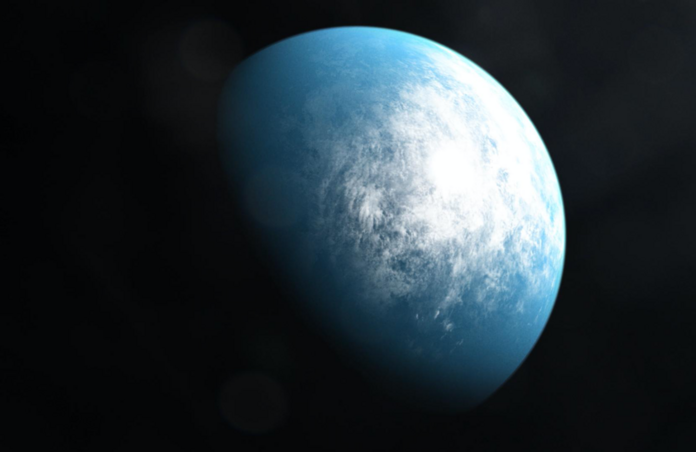TESS Discovers First Earth-Like Exoplanet in the Habitable Zone

On January 6th, 2020, researchers using NASA’s Transiting Exoplanet Survey Satellite (TESS) announced they discovered a new exoplanet in the planetary system TOI 700. The planet, TOI 700 d, is an Earth-size planet that resides in a habitable-zone—the distance-range in every planetary system which allows the presence of liquid water. This Earth-like planet is TESS’s very first discovery of a habitable-zone planet since its launch.
Launched in 2018 onboard a SpaceX rocket, TESS was designed to sift through thousands of star systems, specifically looking for Earth-like planets. TESS meticulously surveys the night sky by using 26 sectors, which are vast sections of the sky. Each sector is scanned for 27 days at a time. This prolonged timeframe allows the satellite to find planets using the transit method. The transit method tracks the visible light of stars and looks for any dips in visibility. These dips indicate a planet or planets orbiting nearby. TOI 700 was discovered using the transit method, and its existence was confirmed by a telescope here on Earth, NASA’s Spitzer Space Telescope.
The TOI 700 system consists of a small M dwarf star and is around 100 light-years away from Earth in the Dorado constellation. Its star, a small M dwarf, is orbited by three planets, with 700 d being the only one in the habitable zone. The dwarf star is roughly 40% of the Sun’s mass and size and just under half its total surface temperature.

700 d is reportedly 20% larger than Earth and completes an orbit every 37 days. The planet receives around 86% of the energy from its star compared to the energy the Sun provides the Earth. After extensive transit observation, the researchers also believe that the planets are tidally locked to their star, meaning they rotate only once per orbit. So, each planet has a side that experiences continuous daylight for an entire orbit.
The exact conditions on 700 d are still unknown, but, using information about the planet’s size and orbiting star, researchers at NASA’s Goddard Space Flight Center have come up with 20 different computer models detailing potential environments. Each model predicts a different possible variation, ranging from a completely ocean-covered planet with a carbon-dioxide atmosphere to a cloudless all-land environment with winds meeting on the side facing the star. Though similar to Earth, TOI 700 d’s atmosphere and environment will undoubtedly be different, especially since it’s tidally locked to its star!
View exoplanet transits using Telescope Live
Mapping exoplanet transits is typically something only available to highly skilled researchers and large institutions with vast resources. TESS is, after all, a multimillion-dollar satellite with top-notch equipment. But, is it possible for any astronomy enthusiast to map exoplanet transits without having a Ph.D. in Astrophysics? It is now with Telescope Live! Telescope Live offers consumers (and scientists) remote access to exceptionally powerful telescopes across the world. Each telescope provides unique features and different observation opportunities. Telescope Live is risk-free to try—signup today and receive 20 free credits to observe whatever you could possibly want!
